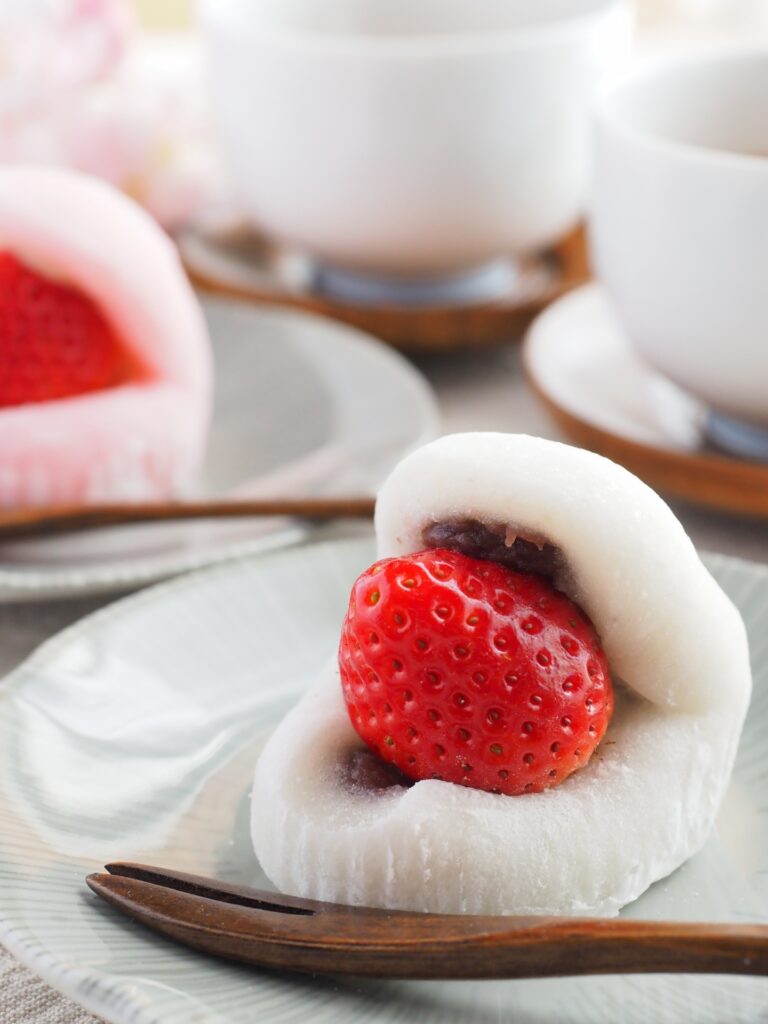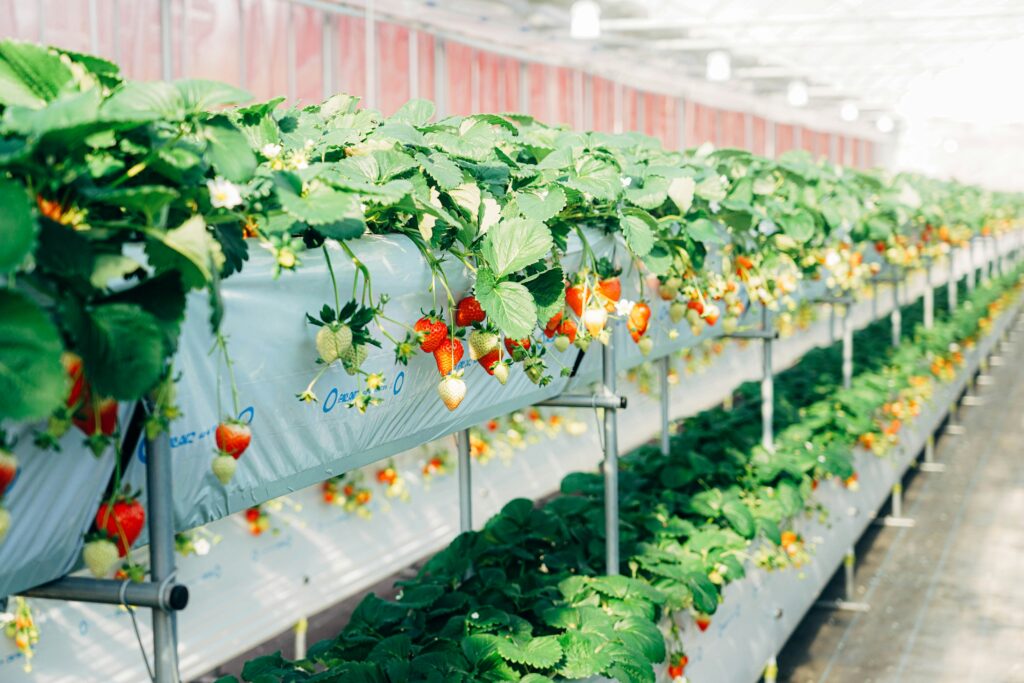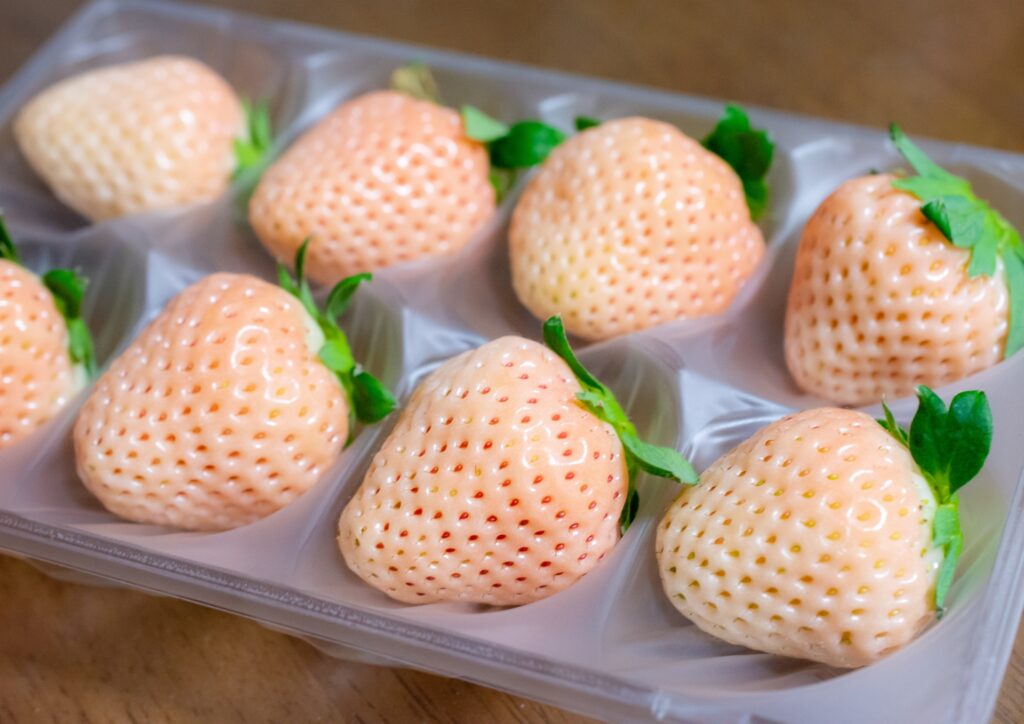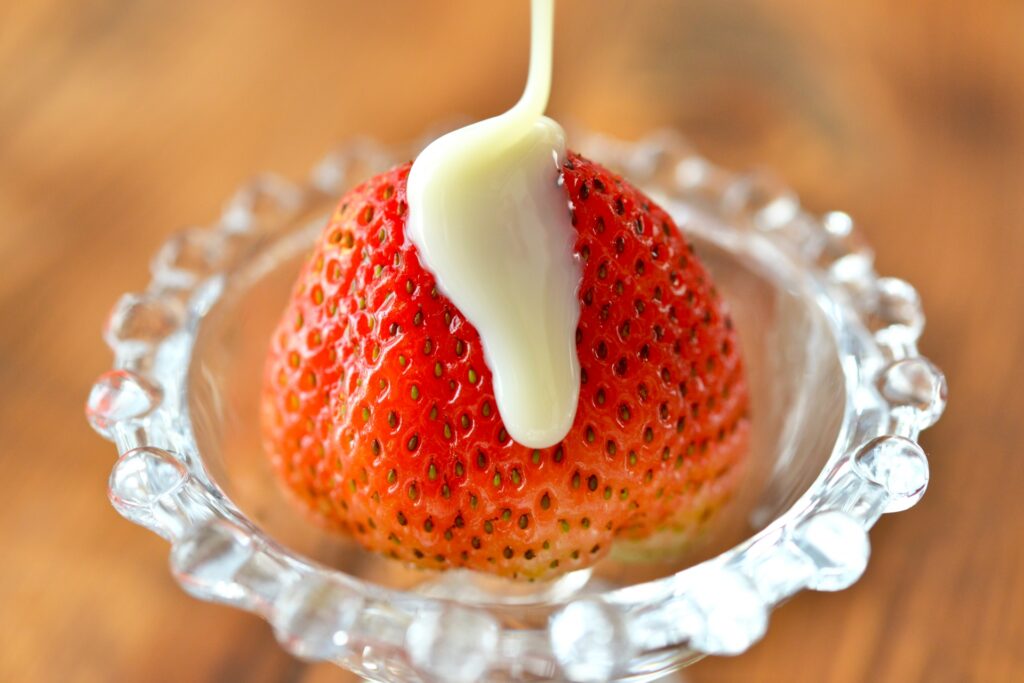Japanese strawberries are unlike any others in the world, or at least any that I have encountered. While many countries associate strawberries with summer, in Japan, they are considered a winter delicacy, carefully cultivated in greenhouses to reach peak ripeness between December and April. This seasonality makes them especially sought after during Christmas, when they take center stage in Japan’s beloved strawberry shortcakes, nestled perfectly between layers of fluffy sponge and blanketed in smooth whipped cream.
Known for their exceptional sweetness, uniform shape, and delicate texture, Japanese strawberries are often considered a luxury fruit, sometimes even sold individually at premium prices. I once came across a single strawberry being sold for 500 yen at Kinokuniya! Well, where there’s a market, there’s demand. So let’s dive into the fascinating and luxurious world of Japanese strawberries.


A brief history of Japanese strawberries
The strawberries we know today in Japan were first brought over in the 1840s by Dutch ships, initially cultivated as ornamental plants rather than for consumption. I found this fact quite surprising—that strawberries weren’t originally valued for their flavor, but for their aesthetics. Interestingly, this focus on appearance has persisted over the years.
You can see it in any supermarket, where strawberries are always sold in perfect, uniform clusters with consistent color, size, and shape. This reflects an important aspect of Japan’s luxury fruit culture, where presentation is just as highly valued as flavor. In fact, as I wrote this article, I realized that this mindset traces all the way back to when strawberries were first introduced to Japan from the Netherlands.
Today, Japan boasts around 300 different varieties of strawberries, with some of the most well-known being Tochiotome and Skyberry from Tochigi Prefecture, Amaou from Fukuoka, and Yubeni from Kumamoto.

Awayuki strawberries: A rare sakura-colored (edible) jewel
Besides popular varieties, Japan is home to rare and visually stunning strawberries, such as Awayuki originally from Kagoshima. Unlike traditional deep-red strawberries, Awayuki boasts a delicate pale pink hue, resembling a strawberry lightly dusted with snow. But its appeal isn’t just visual; this rare strawberry is also remarkably sweet with minimal tartness, making it perfect for those who prefer milder flavors.

The best ways to enjoy Japanese strawberries
While Japanese strawberries are incredibly delicious on their own, they are also enjoyed in various creative ways. One of the most popular methods is drizzling them with sweet condensed milk, which creates a rich, creamy contrast to the fruit’s natural tartness. Japanese strawberries are also commonly used in desserts such as daifuku (mochi with strawberries and sweet red bean paste) and parfaits.

So…what makes Japanese strawberries “more than just fruit”?
At the end of the day, yes, strawberries are fruit. But in Japan, they carry a different meaning than in many other countries, where they might be seen as a quick, healthy snack—something to nibble from a zip-loc bag during a short work break. In Japan, however, strawberries are considered a real luxury. They’re not just a dessert to enjoy after a celebratory meal; they’re also a thoughtful gift, a gesture of appreciation to a friend, colleague, or neighbor. Their high price reflects the immense effort farmers put into cultivating these flavorful gems, which, in turn, reflects the gratitude of the giver toward the receiver. At least, that’s my humble take on it.
What do you think about Japan’s luxury fruit culture?
